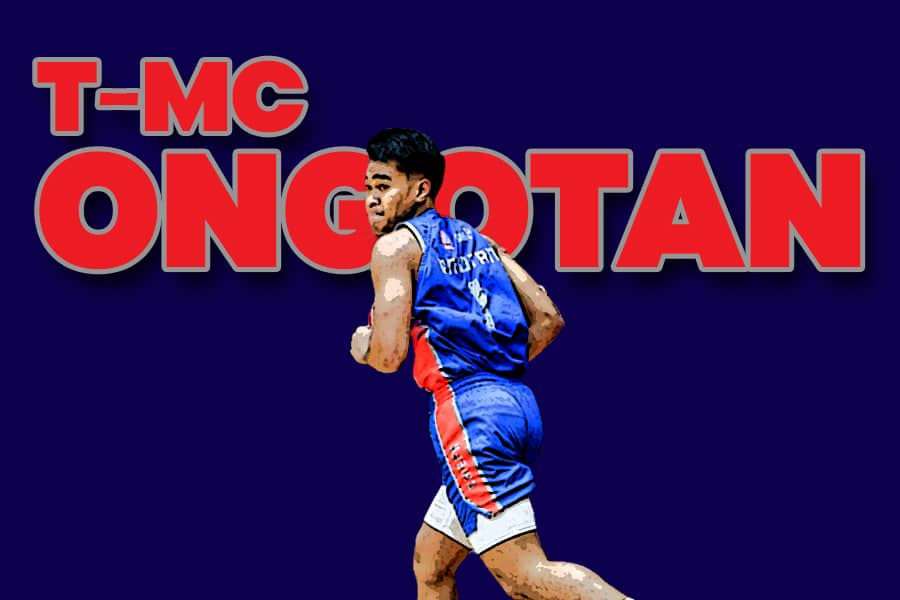THOUGHTS | TERRAFIRMA IS THE "GIFT" THAT KEEPS ON GIVING
- Syd Salazar
- Jul 19
- 4 min read

This is why I don’t break news and only write about information that’s already confirmed.
I’ll end up doing a bunch of rewrites for a couple of my list blogs anyway.
Fuckity, fuck, fuck.
Red Horse and Embassy is a baaaadddd mix.
I’ve had my Top Terrafirma Players list ready for over a month now, just waiting for a disbandment article to drop. Because if there’s any team that deserves to be forced out of the league, it’s this one.
Now that the MPBL is doing well, with some teams financially investing in most of their players, maybe people should stop pushing for more expansion teams in the PBA.
Because lo and behold, Terrafirma is still here, and they’ll probably keep doing the same garbage they’ve always done...
... WITH A VENGEANCE.
And before anyone accuses me of being a hater, I’m not. I just hate their basketball practices.
When your Top 5 imports of all time all have losing records, why are you still here?
More importantly, it feels like the league is forcing them to stay. It feels like the PBA is holding them accountable for their actions even though there isn't a proper replacement lined up. As the league celebrates its 50th anniversary, the only consolation for not having a fresh, competitive franchise is simply maintaining the current lineup of teams. Even with the lowered franchise cost, no one seems to want to buy the team. This feels like the PBA’s version of when the NBA had to take control of the New Orleans Hornets before eventually finding an owner who turned them into the Pelicans.
Honestly, I wish Terrafirma, NorthPort, Phoenix, and Blackwater would just become two consolidated teams. This is why leagues should be cautious about expansion. Before Tanduay and Red Bull joined the PBA, the league's eight teams took turns dominating the '90s. Alaska may have scored a grand slam in 1996, but they weren't the only powerhouse. San Miguel carried over their dominance from the '80s into the early part of the decade. Sunkist came close to a grand slam in 1995. Purefoods was always in the mix. Ginebra rebuilt impressively with the arrival of Marlou Aquino. Shell, on the other hand, closed out the '90s with a strong finish. Even teams that didn't win titles, like Pepsi and Sta. Lucia, had competitive stretches. The Realtors had several third-place finishes, while the Pepsi franchise eventually evolved into the TNT team we know today.
When Terrafirma entered the league in 2014, they weren’t even trying. Unlike Blackwater, who at least had an idea of building a decent squad, Terrafirma had a playing coach in Manny Pacquiao. They never recovered from that stigma.
Now it’s 2026, and they’re still stuck. They lost Stanley Pringle to free agency, and he just signed with Rain or Shine. They still hold Christian Standhardinger’s rights, but he’ll never suit up for them. They’ve got the first pick in the 2025 PBA Draft, but with how broke they are, they’ll probably trade it away in another head-scratcher of a deal.
Their core includes Terrence Romeo, Mark Nonoy, Kemark Cariño, and Louie Sangalang.
This has the same energy as Barako Bull during the tail end of their run in 2010–11.
Terrafirma has no fanbase, no winning culture, and just exists to round out the number of teams. I understand why the PBA is running this setup. I run a fantasy league and know how having an even number of teams is necessary. That’s why I scramble for last-minute additions, and those additions either become real contenders like Converge or filler like Terrafirma.
Right now, the PBA would rather deal with Terrafirma’s mess than risk onboarding another franchise that might suffer the same fate. It sucks, but the league understands the Dyip’s biggest issue is their inability to compete due to a lack of funds. With Starhorse and Zamboanga Valientes rumored as possible replacements but unsure about acquiring such a weak franchise, even a discounted price tag of 20 million pesos still feels too high.
So 100 million?
No thanks.
It took Welcoat two years to become competitive. When Converge took over Alaska, they had to tank their second season to get the players they needed. Phoenix started strong but failed to keep it up after Matthew Wright left. Terrafirma, after more than a decade in the league, still hasn’t shown any desire to compete for a title.
In an ideal world, the PBA should have a double round-robin in the Philippine Cup since that’s when most fans tune in. But I understand why they’d rather let the good teams play 50 games than force fans to watch bottom-tier squads limp through 35. Who wants to watch Terrafirma games when the outcome is already a given unless the other team collapses?
And just to be clear, I like a lot of Terrafirma’s players. It pisses me off that someone like Sangalang was only a late second-round find. It’s frustrating to see Letran players like Brent Paraiso and Tommy Olivario lose their edge the moment they enter the PBA. These guys were beasts in the NCAA. Sure, the PBA is tougher, but going undefeated in a tournament is no small feat. Still, you can’t win if your confidence is broken—and that’s exactly what Terrafirma represents.
They can survive a season, but they’re incapable of building a winning tradition. That’s why I’d rather see the PBA partner with the MPBL to bring in guest teams and reduce the current pool to ten legitimate squads.
Unless a rich tycoon is willing to shell out half a billion pesos over the next decade, the PBA will keep relying on stopgap teams like Terrafirma to maintain structure, even if those teams have no realistic shot at winning a title.






Comments